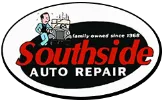Fall Auto Radiator Flush: Use The Correct Coolant Type
What Does Coolant Do?
Engine coolant is the protective fluid found in the cooling system of your vehicle. Its primary purpose is two-fold. First, it increases the fluid’s boiling point in the engine when it’s hot outside. Conversely, it decreases the freezing point of the fluid in the engine when it’s cold outside. Its secondary purpose is just as important. The additives in coolant prevent rust, corrosion, and excessive wear on the engine & cooling system’s internal components.Coolant Types
In the past, coolant (or antifreeze) was always easy to identify by the neon-yellow-green color. That is no longer the case with modern vehicles. There are many different coolant types and colors available these days. Some are designed for specific kinds of vehicles, and some are formulated for a particular brand of vehicles. Therefore, always check your owner’s manual for your auto’s recommended coolant type. Furthermore, if you need to add more coolant to your car, don’t depend on the color alone. Read the labels! Coolant colors are not universally regulated. And remember, it’s very important to never mix different coolants together.IAT (Inorganic Additive Technology – Low Silicates)
This coolant type is the original coolant, which most of us are familiar with. This neon-yellow-green coolant was used in almost every vehicle for decades. However, newer automobiles rarely use this coolant anymore since the additives degrade quickly, and requires quite frequent service intervals: approximately every 2 years or 24,000 miles.OAT (Organic Acid Technology – Nitrite Free)
OAT coolants are commonly used in GM, Saab, and VW vehicles. It is usually dyed orange, but it can also be yellow, red, or purple, depending on the manufacturer. OAT coolant is NOT compatible with other coolant types. Vehicles that use OAT coolant should be serviced every 5 years or 50,000 miles.HOAT (Hybrid OAT – Low Silicates/Nitrate Free)
A hybrid of both IAT and OAT formulas, this coolant is usually yellow or orange in color. It is used in Chrysler, Ford, and some European model vehicles. Service intervals for this coolant can range between 2 – 10 years or 25,000 – 100,000 miles.HOAT (Hybrid OAT Phosphate Free)
Another hybrid coolant type is commonly used in European vehicles such as BMW, Mini, Volvo, and Tesla. It is turquoise in color. Check your owner’s manual for the manufacturer’s suggested service intervals if you own one of these vehicles.P- HOAT (Phosphated HOAT)
This hybrid coolant is generally used in Honda, Hyundai, KIA, Nissan, Toyota, and other Asian vehicles. Colors for this coolant type can be pink or blue, depending on who manufactures it. Check your owner’s manual for the manufacturer’s suggested service intervals.Si-OAT (Silicated HOAT)
High-performance vehicles like Audi, Mercedes Benz, Porsche, VW, and others use this type of coolant. It is often purple in color. Check your owner’s manual for the manufacturer’s suggested service intervals.Dangers of Mixing Coolant Types
Is it dangerous to mix different types of coolant? Yes! If you add the incorrect coolant to your cooling system, it can cause a multitude of issues and damages:- Mixed coolant fluids can become gelatinous and stop flowing through the cooling system.
- The engine, radiator, water pump, and heater core can all overheat and fail.
- Rust and corrosion can build up, causing blockages.
- Overheating can destroy rubber fittings, hoses, and gaskets.
Public Safety Notice
It is also crucial to know that all coolant/antifreeze is toxic if ingested or inhaled. Practice safety precautions every time you top-off or replace the coolant in your vehicle. In addition, promptly clean up spills and leaks. Remember to always keep coolant out of the reach of children and pets. Animals are especially drawn to the sweet taste and bright colors of coolant. Finally, be earth friendly and follow the instructions on the coolant container for proper disposal or recycling methods.Radiator Flush Benefits
Routine auto maintenance includes both a coolant fill and radiator flush. So, what’s the difference? During a coolant fill, your auto technician drains the old fluid from the cooling system using gravity, and then refills it with fresh coolant. During a radiator flush, your auto technician will also drain the old fluid from the cooling system. However, they then push a cleaning solution, under high pressure, through the system to remove all the old coolant and contaminants. Finally, they add fresh coolant to the cleaned system. The benefits of a radiator flush include:- Radiator flushes remove all accumulated debris from the cooling system.
- Clean and fresh coolant helps the engine run more efficiently.
- New coolant helps the cooling system’s components last longer with proper maintenance.
- New coolant keeps the water pump properly lubricated and prevents premature wear.
